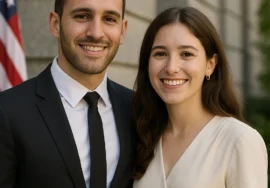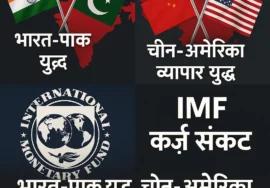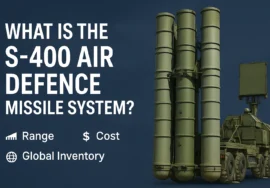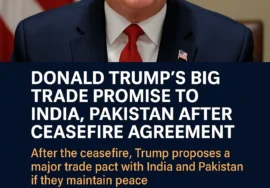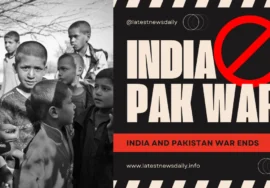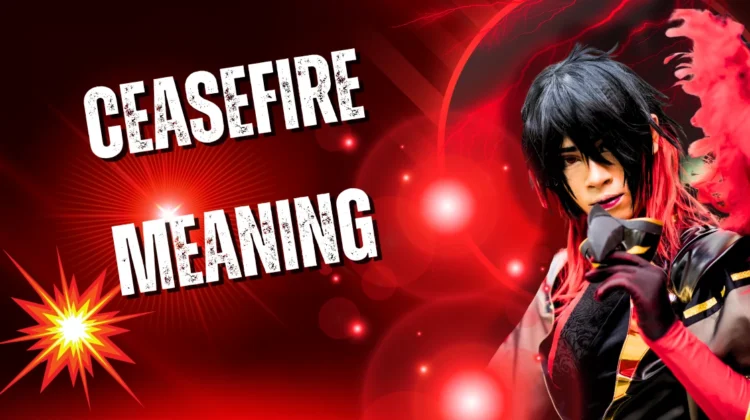
Ceasefire Meaning: A Simple Yet Powerful Step Toward Peace
Introduction: What Does a Ceasefire Really Mean?
When we hear the word ceasefire, most of us think of temporary peace between warring nations. But it’s much more than that. A ceasefire isn’t just about silencing weapons — it’s often a fragile first step toward long-lasting peace. In this guide, we’ll break down what a ceasefire really means, why it matters, and how it plays a critical role in both diplomacy and survival.
Ceasefire Meaning: A Clear Definition
A ceasefire is an official agreement between opposing sides in a conflict to stop fighting for a certain period. It can be:
- Temporary, used to open humanitarian corridors or allow peace talks
- Permanent, if both sides agree to end the war completely
In simple words, a ceasefire is a pause button in a war — a moment of calm in the chaos, often meant to pave the way for negotiations or peaceful resolution.
Types of Ceasefires
Understanding the different types of ceasefires helps grasp how they function in real-world scenarios:
1. Unilateral Ceasefire
One side declares to stop fighting — often as a goodwill gesture — without a mutual agreement.
2. Bilateral Ceasefire
Both parties agree to stop military actions. This is more structured and often supported by international observers.
3. Temporary or Tactical Ceasefire
A short-term halt in violence, often used to evacuate civilians, exchange prisoners, or deliver aid.
4. Permanent Ceasefire
A formal agreement signaling the end of conflict. This is often part of a larger peace treaty.
Why Are Ceasefires Important?
A ceasefire is not peace — but it’s an essential step toward it. Here’s why it matters:
- 🕊️ Saves Lives: Immediate reduction in violence helps protect civilians and soldiers alike.
- 💬 Opens Dialogue: Creates space for negotiations and diplomacy.
- 🏥 Allows Aid Access: Humanitarian organizations can reach people in need.
- 📊 Builds Trust: A successful ceasefire can build momentum toward lasting peace.
Real-World Examples of Ceasefires
Let’s look at a few moments in history where ceasefires shaped the course of conflict:
- India-Pakistan Ceasefire (2003): Both countries agreed to a ceasefire along the Line of Control (LoC), bringing relative calm after years of clashes.
- Korean Armistice Agreement (1953): Though not a formal end to war, it effectively paused hostilities between North and South Korea.
- Syria Ceasefires (Multiple Years): Temporary ceasefires brokered by the UN allowed humanitarian access to besieged cities.
Each example shows how fragile yet meaningful ceasefires can be in reducing suffering and building hope.
Challenges of Maintaining a Ceasefire
Despite good intentions, ceasefires can be hard to enforce:
- 💣 Frequent Violations: Skirmishes and mistrust often break the truce.
- 🤝 Lack of Political Will: Without a strong commitment to peace, talks may fail.
- 🌍 Outside Influence: Geopolitical pressure can either support or sabotage efforts.
That’s why third-party monitoring, such as UN peacekeepers or international observers, often play a critical role.
Ceasefire vs. Truce vs. Armistice: Are They the Same?
These terms are often used interchangeably, but they have subtle differences:
| Term | Meaning | Duration |
|---|---|---|
| Ceasefire | A pause in fighting, can be short- or long-term | Temporary or Permanent |
| Truce | A temporary halt, usually informal or localized | Temporary |
| Armistice | A formal agreement to end fighting, usually a prelude to a peace treaty | Permanent (Ideally) |
Understanding these nuances helps in interpreting international news and conflict updates with more clarity.
How Does the World Respond to a Ceasefire?
Ceasefires are often announced and monitored by global organizations:
- United Nations (UN): Facilitates dialogue, deploys peacekeeping forces
- Red Cross and NGOs: Provide humanitarian relief during pauses in conflict
- News Media: Raises awareness and builds public pressure for accountability
In many cases, a ceasefire becomes a test of sincerity from both sides — and the global community closely watches every move.
FAQs: Understanding Ceasefires Better
❓Is a ceasefire legally binding?
It depends on the agreement. Some ceasefires are formalized in international law, while others are informal or verbal.
❓Can a ceasefire lead to permanent peace?
Yes — though it’s just the first step. Many peace processes begin with a ceasefire and evolve into formal peace treaties.
❓What happens if one side violates the ceasefire?
The agreement may collapse. This can escalate tensions, delay peace talks, or lead to renewed fighting.
❓Who monitors ceasefires?
Often third-party observers like the UN, regional coalitions, or neutral international bodies.
Conclusion: Ceasefires Are Hope in Action
In a world filled with conflicts and divisions, a ceasefire — even if brief — stands as a powerful symbol of hope. It says, “We are willing to pause, to talk, to consider peace.” And that’s no small thing.
So the next time you hear about a ceasefire in the news, remember: it’s not just a word. It’s a lifeline. A window of possibility. A quiet breath in the middle of a storm.





